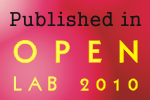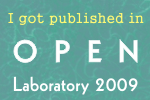ROSALIND: an addictive bioinformatics learning site
I just learned about this one: ROSALIND is a really cool concept in learning bioinformatics. You are given problems of increasing difficulty to solve. Start with nucleotide counting (trivial) and end with genome assembly (not so trivial). To solve a problem, you download a sample data set, write your code and debug it. Once you think you are ready, you have a time limit to solve and provide an answer for the actual problem dataset. If you mess up, there is a timed new dataset to download. This thing is coder-addictive. Currently in Beta, but a lot of fun and seems stable.
More problems to come, and they also have post problem-solving discussion boards (no, you cannot take a peek at the answers), and a discussion board for new problems. From their “About” page:
The project’s name commemorates Rosalind Franklin, whose X-ray crystallography with Raymond Gosling facilitated the discovery of the DNA double helix by Watson and Crick. […]
Rosalind is a joint project between the University of California at San Diego and Saint Petersburg Academic University along with the Russian Academy of Sciences. Rosalind is partly funded by a Howard Hughes Medical Institute Professor Award and a Russian Megagrant Award received by Pavel Pevzner.
Did I say addictive? Yes. Make sure you clear some time for this one.



















[…] ‘I just learned about this one: ROSALIND is a really cool concept in learning bioinformatics. You are given problems of increasing difficulty to solve. Start with nucleotide counting (trivial) and end with genome assembly (not so trivial). To solve a problem, you download a sample data set, write your code and debug it. Once you think you are ready, you have a time limit to solve and provide an answer for the actual problem dataset. If you mess up, there is a timed new dataset to download. This thing is coder-addictive. Currently in Beta, but a lot of fun and seems stable…’ addictive-bioinformatics-learning-site […]
I just got into this too. Great concept, one of those you wish you had thought up yourself. I’m using it at our bioinformatics club meetings to help teach Python and bioinformatics algorithms.